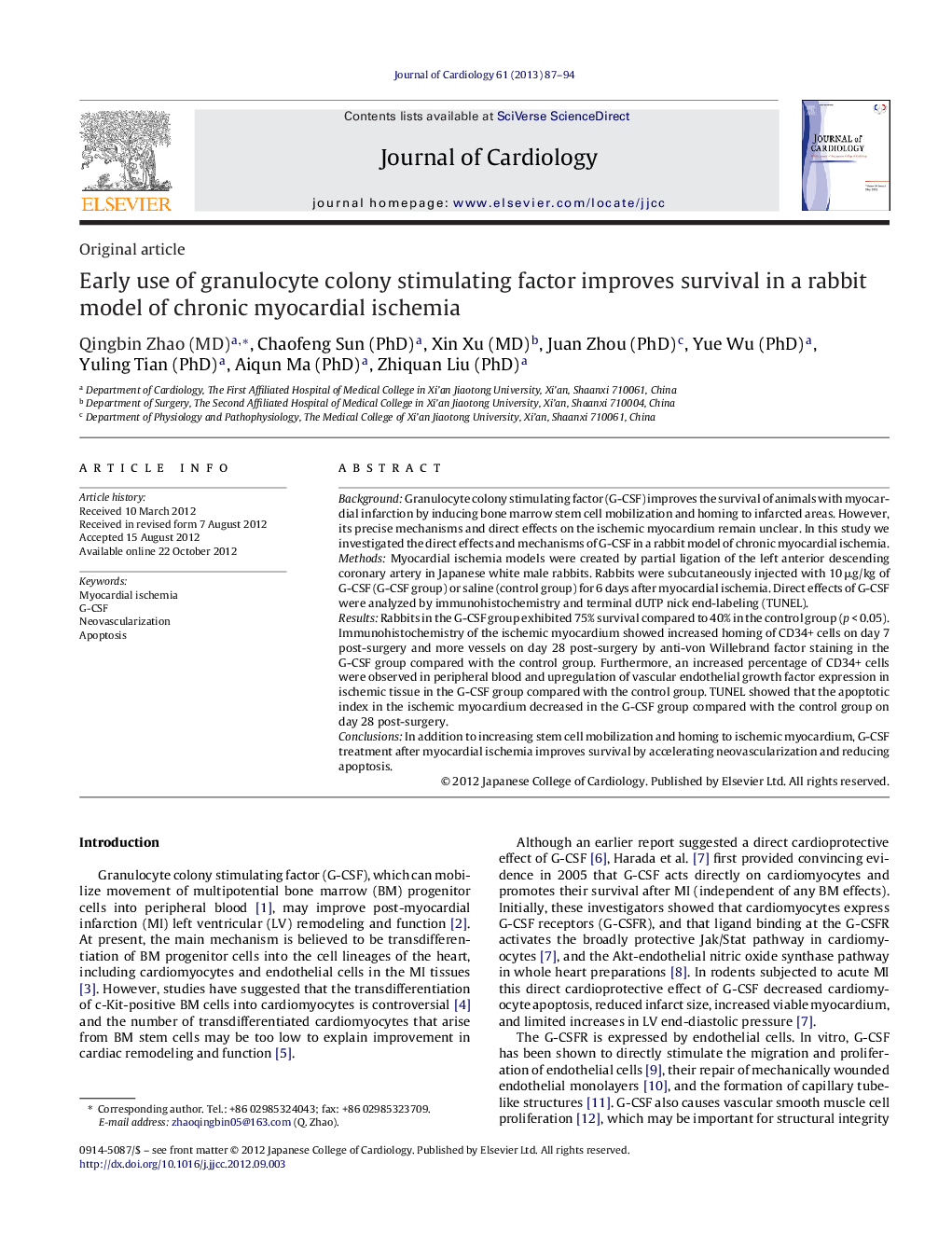| Article ID | Journal | Published Year | Pages | File Type |
|---|---|---|---|---|
| 2963224 | Journal of Cardiology | 2013 | 8 Pages |
BackgroundGranulocyte colony stimulating factor (G-CSF) improves the survival of animals with myocardial infarction by inducing bone marrow stem cell mobilization and homing to infarcted areas. However, its precise mechanisms and direct effects on the ischemic myocardium remain unclear. In this study we investigated the direct effects and mechanisms of G-CSF in a rabbit model of chronic myocardial ischemia.MethodsMyocardial ischemia models were created by partial ligation of the left anterior descending coronary artery in Japanese white male rabbits. Rabbits were subcutaneously injected with 10 μg/kg of G-CSF (G-CSF group) or saline (control group) for 6 days after myocardial ischemia. Direct effects of G-CSF were analyzed by immunohistochemistry and terminal dUTP nick end-labeling (TUNEL).ResultsRabbits in the G-CSF group exhibited 75% survival compared to 40% in the control group (p < 0.05). Immunohistochemistry of the ischemic myocardium showed increased homing of CD34+ cells on day 7 post-surgery and more vessels on day 28 post-surgery by anti-von Willebrand factor staining in the G-CSF group compared with the control group. Furthermore, an increased percentage of CD34+ cells were observed in peripheral blood and upregulation of vascular endothelial growth factor expression in ischemic tissue in the G-CSF group compared with the control group. TUNEL showed that the apoptotic index in the ischemic myocardium decreased in the G-CSF group compared with the control group on day 28 post-surgery.ConclusionsIn addition to increasing stem cell mobilization and homing to ischemic myocardium, G-CSF treatment after myocardial ischemia improves survival by accelerating neovascularization and reducing apoptosis.
